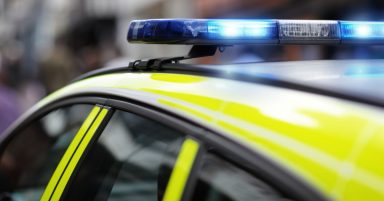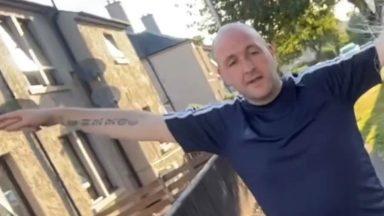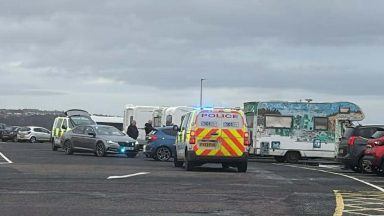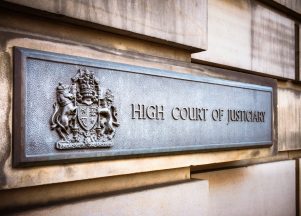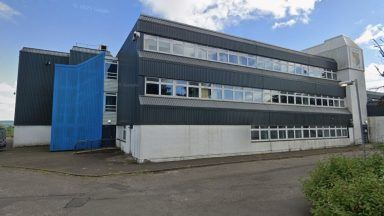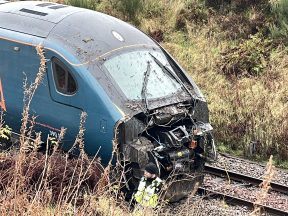A former RAF pilot who helped clean up the Lockerbie attack – the UK’s deadliest terror incident – has finally opened up about his demons.
Ron Graham was on Christmas leave on December 21, 1988, when commercial flight Pan Am Flight 103, from London to New York, was blown up by a bomb – killing 270 people.

The terrorist incident resulted in the scattering of human remains over a wide part of southern Scotland – and Mr Graham was one of the people involved in the clean-up operation.
In the 31 years since the incident, Mr Graham, now 67, originally from Glasgow, has battled PTSD, alcoholism, panic attacks, two mini strokes, and has been in rehab three times.
And around a year ago – as the country marked the 30th anniversary of the Lockerbie attack – Mr Graham found himself homeless, after his fourth marriage came to an end.
Now living in supported housing in Cornwall, Mr Graham is finally able to open up about his experiences for the first time – and calls Lockerbie a defining point in his life.
He said: “It’s only in the past 12 months where I’ve felt comfortable talking about it. By talking about it, it lessens the impact.
“I’ve come a long way in a short time. I can actually think straight, and I don’t have the flashbacks and panic attacks as much.
“Sometimes you feel bitter that things didn’t go your way and you’ve lost things. I’ve accepted where I’m at but I’m still a work in progress.”
Recalling the day of the attack, Mr Graham said: “I was on leave, because it was just before Christmas.
“I got asked, because if you’re in the air force and connected with aircraft you can recognise certain parts of the structure, and that’s what they were looking for.
“They cleared as much as they could and then the military came in. The local population were involved as well, the CIA were there, and it was quite a circus.
“There were 270 bodies to clean up.”
Mr Graham carried on serving in the military for a further 13 years, but tried to block out the memories of what he had seen.
“As the years rolled by it came back to the forefront,” he said.
“I started having nightmares and panic attacks and that was a slow build up until the point I couldn’t function, and that’s when I came out of the forces in 2001.”
Later, as part of his daily commute to work at IBM, Mr Graham found himself driving past the prison where Abdelbaset al-Megrahi, the only person ever convicted in relation to the bombing, was incarcerated.
He recalled: “He got banged up in prison at HMS Greenock and I was working a mile and a half up the road, so I passed that prison every day.
“I did that every day for three years and that affected me a bit, knowing that he was in there.”

Mr Graham first became an alcoholic when he joined the forces way back in 1985, and increasingly dealt with his problems by drinking.
When he came out of the forces in 2001, Mr Graham blamed the military for leaving him in a vulnerable position.
“For ten years I was blaming them,” he said.
“But somebody sat me down and said, ‘did they put the drink down your neck? You did it to yourself’. I revaluated and said, I’ve probably done it to myself.
“We all have our own ways of dealing with things. Some of us are way off the mark. I was destroying my liver and torturing myself that I should have done more.”
Over the past 20 years Mr Graham has been married four times, and entered rehab on three occasions.
A year ago he found himself homeless and decided to drive to Cornwall, although he had little money and nowhere to go.
Mr Graham chose Cornwall because he has fond memories of holidaying in the county with his family as a child.
After sleeping rough in Penzance, Mr Graham was picked up by the St Petrocs homeless charity.
The progress Mr Graham has made since engaging with St Petrocs and the drug and alcohol charity Addaction has been immense.
“I don’t miss alcohol as much as I thought I would. I still have my good days and my bad days.
“I’ve had two operations on a spinal operation, plus two mini strokes and tinnitus. Combined together, that’s not great.”
He added that he still has some way to go.
“When I was in rehab, they wanted to take me back there, to Lockerbie, to where it happened, and I point blank refused. I wouldn’t entertain it at all,” he said.
“Then I was in the Priory last year, and they asked me if I’d like to go to Farnborough where the remains of the aircraft are.
“I thought, do I really want to put myself through it? I’ve seen it once.
“But I have decided I will go back to Lockerbie to do the monument to the 270 people that were killed, and try and find some peace.”
By Mike Smallcombe, SWNS
Follow STV News on WhatsApp
Scan the QR code on your mobile device for all the latest news from around the country




